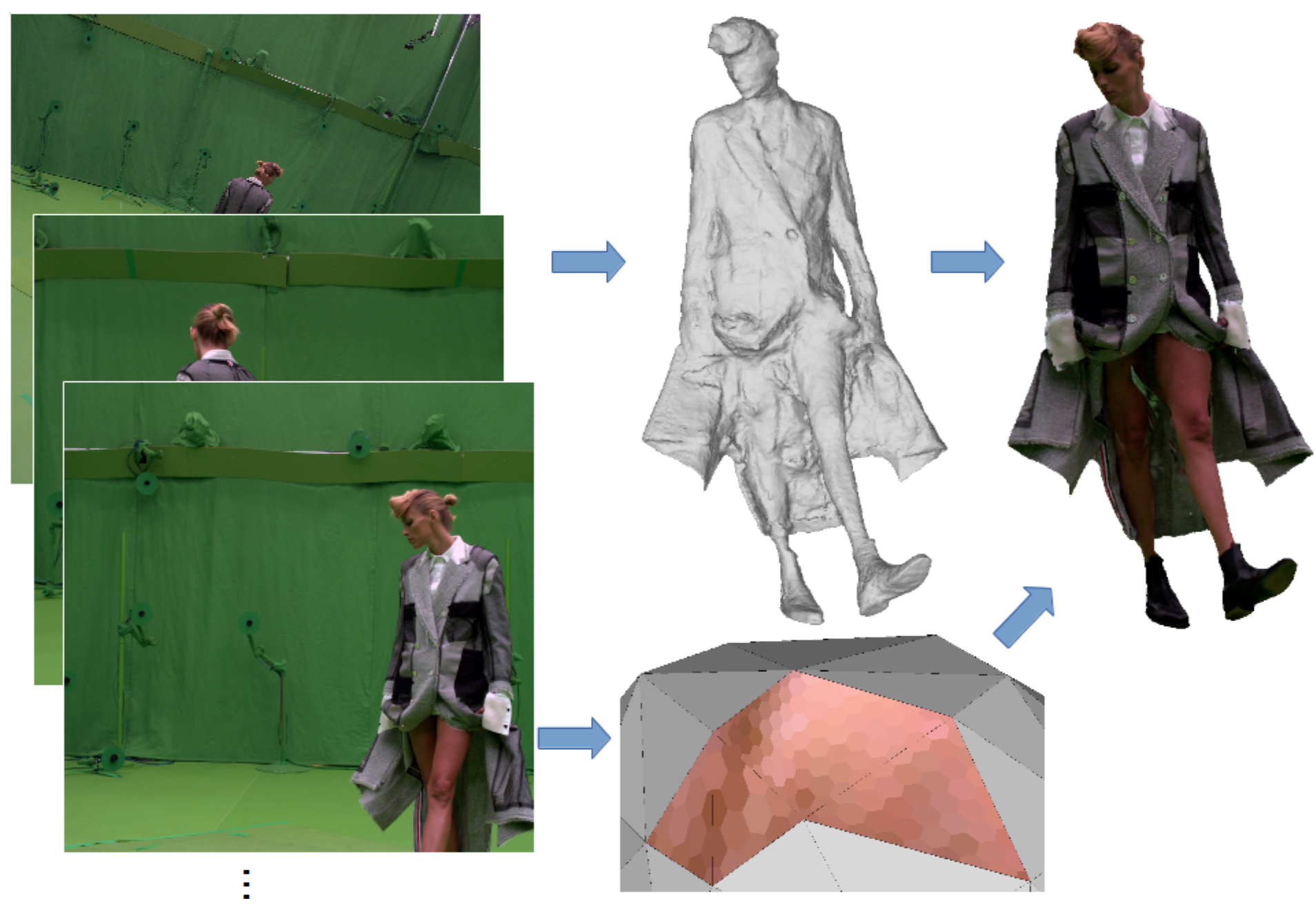Section: New Results
Adaptive Mesh Texture for Multi-View Appearance Modeling
|
Most applications in image based 3D modeling resort to texture maps, a 2D mapping of shape color information into image files. Despite their unquestionable merits, in particular the ability to apply standard image tools, including compression, image textures still suffer from limitations that result from the 2D mapping of information that originally belongs to a 3D structure. This is especially true with 2D texture atlases, a generic 2D mapping for 3D mesh models that introduces discontinuities in the texture space and plagues many 3D appearance algorithms. Moreover, the per-triangle texel density of 2D image textures cannot be individually adjusted to the corresponding pixel observation density without a global change in the atlas mapping function. To address these issues, we have proposed a new appearance representation for image-based 3D shape modeling, which stores appearance information directly on 3D meshes, rather than a texture atlas. We have shown this representation to allow for input-adaptive sampling and compression support. Our experiments demonstrated that it outperforms traditional image textures, in multi-view reconstruction contexts, with better visual quality and memory foot- print, which makes it a suitable tool when dealing with large amounts of data as with dynamic scene 3D models.
This result was published in the international conference on 3D Vision (3DV'19) [11].



